The humble home trainer is a fantastic tool for replicating the demands required for cycle racing. In this article, we discuss in detail examples of data from typical bike races and then discuss how to then translate them into the intensities required for indoor cycle training workouts.
Figure 1 is a typical example of a Criterium race. The red wavy line running across the top of the graph is the athlete’s HR recorded over time. This is recorded from a Polar HR monitor and downloaded to a computer. The blue line is speed. The brown is altitude and the green line is cadence. The coloured bands are calibrated against the HR zones for the athlete. Let’s just focus on the HR and coloured bands as the others are not important in this example. As you can see in the race there are times when the athlete is going hard and is peaking into his VO2MAX zone (red) but he (it is a he in this case) is spending most of his time in the E3 Zone (yellow). But it’s not until he is coming to the end of the race then he really peaks right up into the VO2MAX zone.
Figure 1
In this example, the success or failure of this athletes ability to win this race is based on his ability to ride as efficiently as possible during the race to ensure that he has the reserves to go all out as hard as possible in the final laps of the race. Its the last few laps that are critical to his success. So he must train at intensities right up into his VO2MAX zone to ensure that he has developed enough strength to enable him to ride at these elevated intensities. This will ensure that he is able to take control of the race and place himself in the right position in the bunch (perhaps 2-4 riders back) around the final corner and launch his final sprint attack at the end of the race. This athlete has performed the proper training so is in control of the race.
Figure 2 is an example of a tougher race. As you can see in this example this athlete is spending a large amount of time in their VO2MAX zone. It’s commendable as this is only something that a highly trained athlete can perform. The problem here is that the athlete is not really in control of the race. They are spending way too much time just staying with the race.
Figure 2
Figure 3 is an example of a typical time trial. As you can see this athlete is able to ride well in their VO2MAX zone for extended periods; around 27 min in this case. I personally perform 95% of my time trial training in my living room on my stationary bike and advise the people I coach to do the same. It’s only the two weeks leading up to the race that I perform some of my time trial training on my actual time trial bike on the road.
Figure 3
Figure 4 is and examples of HR data from a hard training ride done with a group of A grade riders. This ride took 3 hours and 21 min. As you can see from the data it is very unstructured. Take particular notice of the ride back (In this case, Melbourne’s notorious Hell ride) in which the rider is not really pushing into the VO2MAX zone because he is sitting in and drafting in the bunch. Training time in the VO2MAX zone for this 3 hours and 21 min ride is 8 min and 30 seconds. Some people think this is excellent training, but the same can be achieved in a shorter time on a home trainer as demonstrated below.
Figure 5 is an example of a session on a home trainer taking only one hour. It’s a big one hour though. As you can see it’s very structured. In the hour the athlete has spent 7 min 30 secs in their VO2MAX zone. Notice the speed is calibrated at x 2 to take advantage of the efficiency of this training. So the rider has ridden an effective distance of 74 km. Now, this is far more efficient training. What’s more, the athlete can repeat this session at any time and measure their improvement.
Figure 5
Other articles of interest:
Slow Down To Speed Up Your Hill Climbing – Cycle Up Hills Fast
Difference Between Training with Heart Rate and Power
How To Work Out Your Cycling Heart Rate Zones
What Does Your Resting Heart Rate Mean?
Heart Rate and Performance Parameters in Elite Cyclists
Cyclist’s Survival Kit – Don’t Leave Home Without It

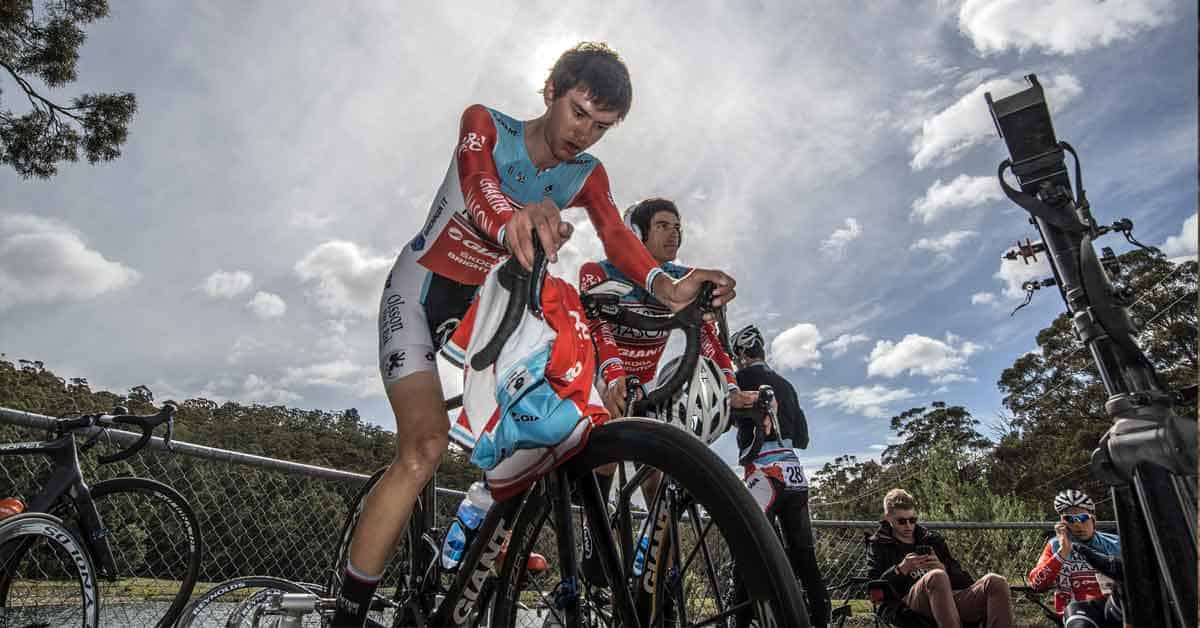
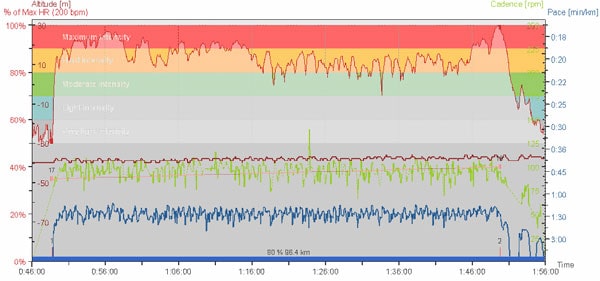
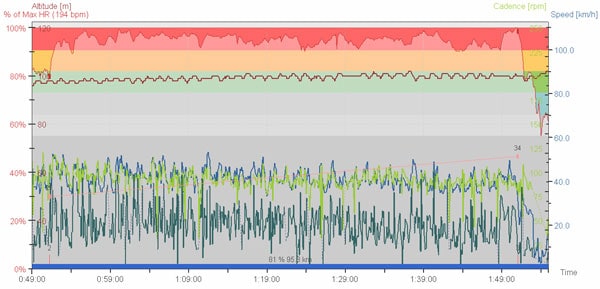
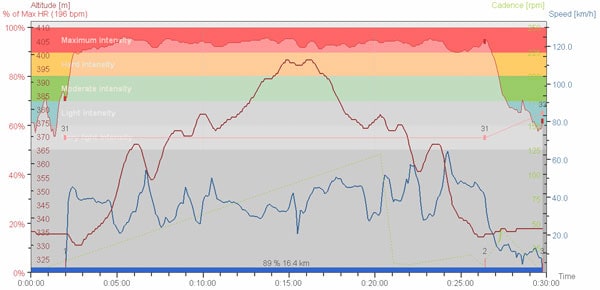

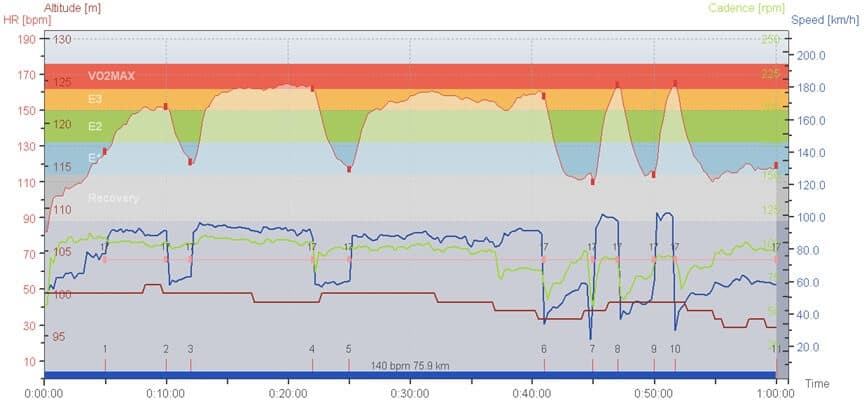
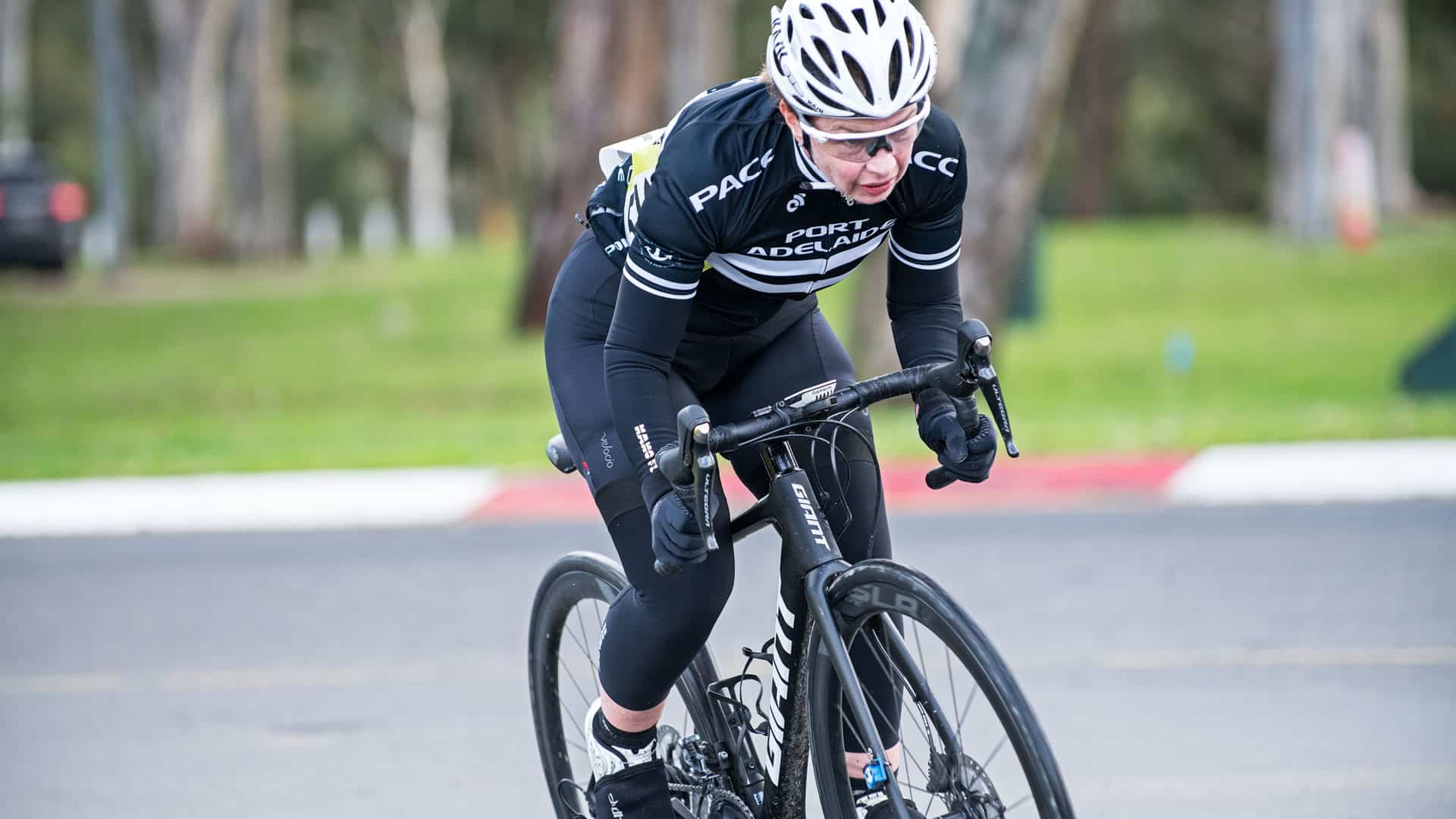
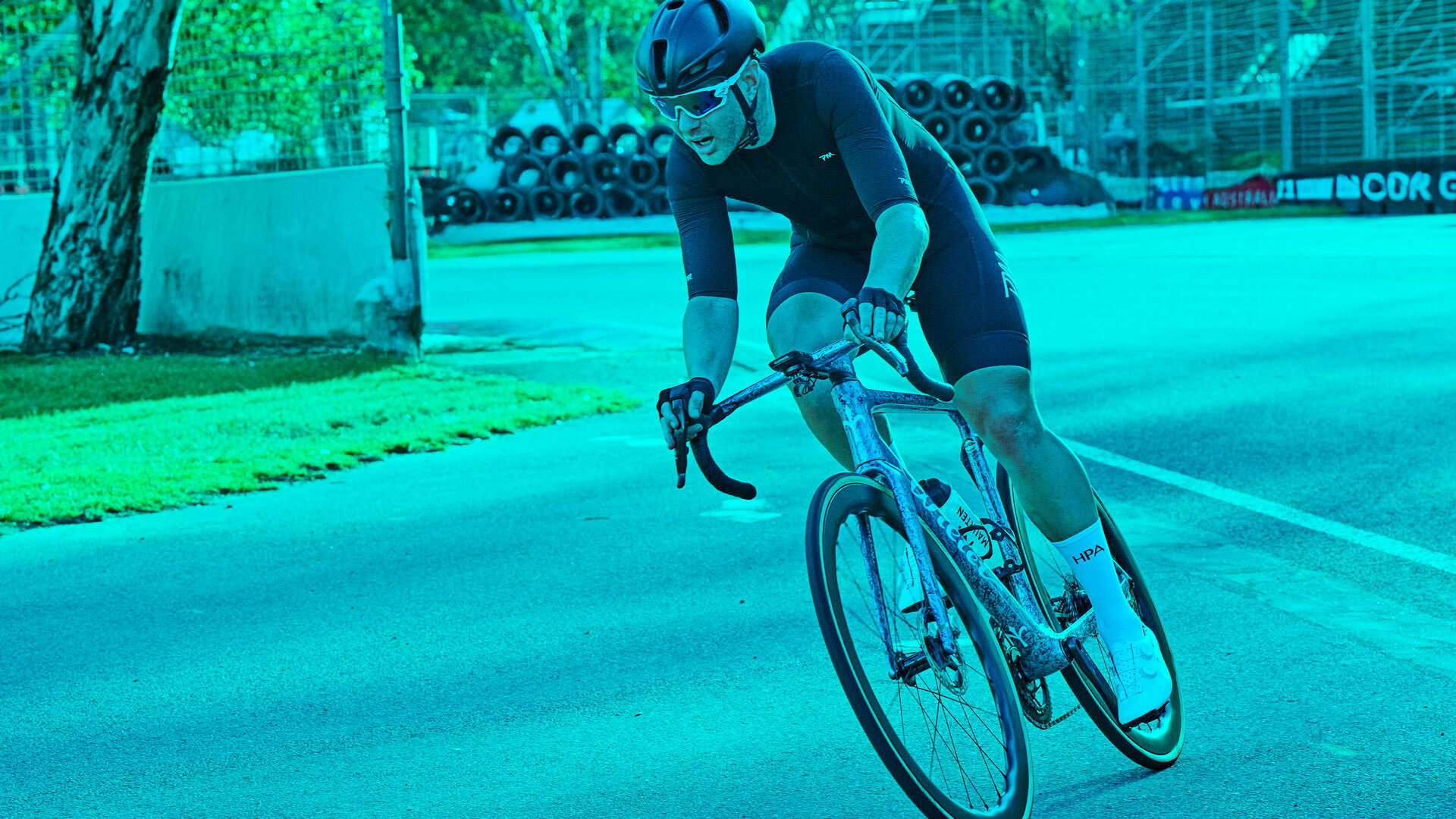
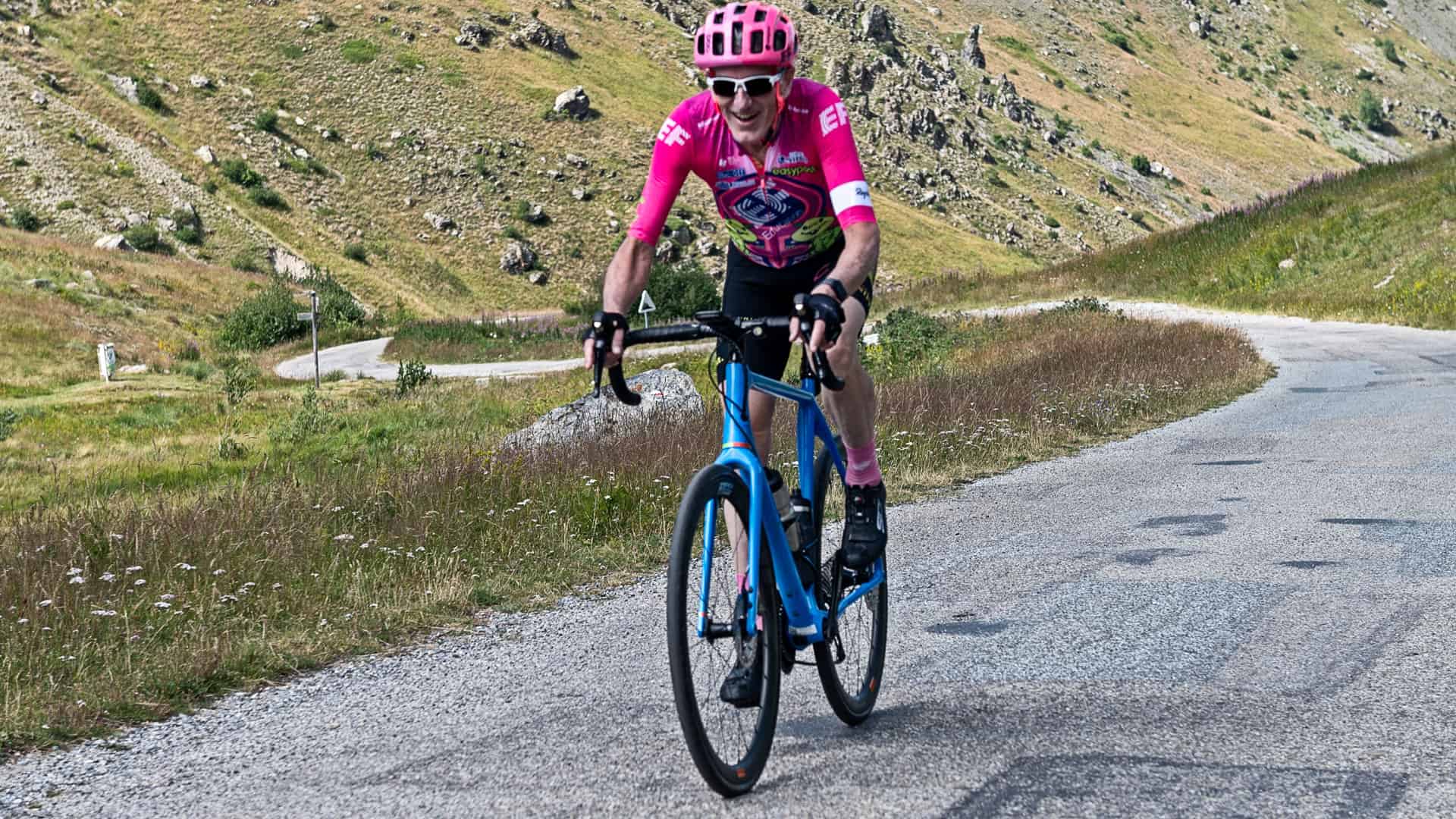
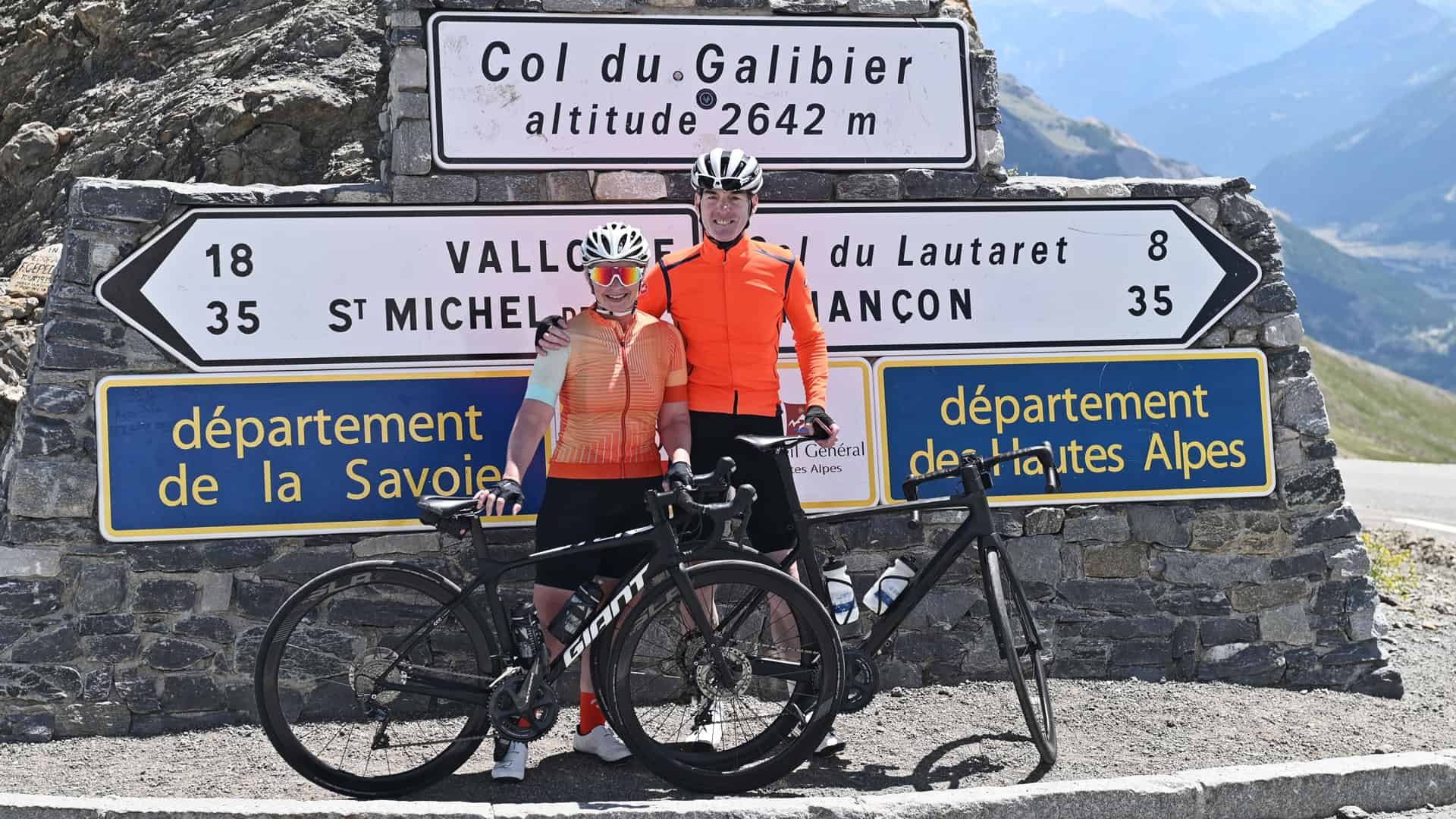
Leave A Comment